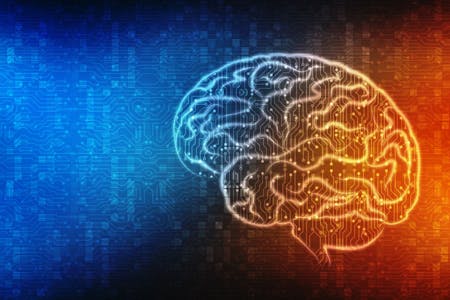-
Stroke
A stroke is also known as a Cerebral Vascular Accident (CVA). It occurs when the blood supply to the brain is interrupted or otherwise reduced. The brain tissue then becomes oxygen and nutrient deprived causing the brain cells to die within minutes. This is a medical emergency.
Physical Therapy After a Stroke
We specialize in treating disabilities related to movement and sensory impairments after a stroke. Our team is trained in all aspects of anatomy and physiology related to normal function, with an emphasis on movement.
We Help Stoke Patients Recover Their Function
We will perform a thorough assessment of the stroke survivor's:- Strength,
- Endurance,
- Range of motion,
- Walking abnormalities, and
- Sensory deficits.
We will then design and individualized rehabilitation programs aimed at regaining control over moment and to regain any balance deficits.
Recovering Balance, Walking Skills, and the Use of an Impaired Arm or Leg
Stroke survivors tend to avoid using impaired limbs, a behavior called learned non-use. However, the repetitive use of impaired limbs encourages brain plasticity and helps reduce disabilities.
Our physical therapists help survivors regain the use of stroke-impaired limbs teach compensatory strategies to reduce the effect of remaining deficits and establish ongoing exercise programs to help people retain their newly learned skills.
Strategies used by physical therapists to encourage the use of impaired limbs include:
- Selective sensory stimulation such as tapping or stroking,
- Active and passive range-of-motion exercises,
- The proper use of assistive devices such as walkers and wheelchairs, and
- Temporary restraint of healthy limbs while practicing motor tasks.
In general, physical therapy emphasizes practicing isolated movements, repeatedly changing from one kind of movement to another, and rehearsing complex movements that require a great deal of coordination and balance, such as walking up or down stairs or moving safely between obstacles.
-
Traumatic Brain Injury
A traumatic brain injury (TBI) is an injury to the brain, skull or scalp that results in a disruption of the brain's normal function. TBIs can be caused by a bump, blow or jolt to the head, the head suddenly and violently hitting an object or when an object pierces the skull and enters brain tissue. Blasts are a leading cause of TBI among active duty military.
Types of Traumatic Brain Injuries
There are four main types of traumatic brain injuries:
- Concussion - mild brain injury caused by shaking, blow to the head or sudden change in movement (e.g., whiplash). Mild concussions may or may not show up on medical imaging tests. However, symptoms may persist or new symptoms may develop over time after the injury. For example, persistent post-concussive symptoms (also known as post-concussion syndrome) is a concussion with symptoms that sometimes persist for a year or more.
- Brain Contusions - bruising of the brain tissue caused by the breaking and leaking of small blood vessels, which can cause a buildup of pressure on the brain. Brain damage from contusions can be directly under the site of impact (coup) and opposite side from the point of impact as the brain slams into the opposite side of the skull (countrecoup).
- Penetrating Injuries - a penetrating brain injury when something pierces through the skull causing the object, hair, skin or skull fragments to make contact with the brain. These are typically caused by slip-and-full accidents, motor vehicle accidents, excessive force sports injuries or a gunshot wound to the head.
- Anoxic Brain Injuries - an injury that occurs when the brain does not get enough oxygen to function properly. Brain cells in an oxygen-deprived brain begin to die after just five minutes, resulting in brain injury. Oxygen is carried to the brain by blood cells, so the main cause of anoxic brain injuries is blockage of blood flow resulting from such causes as a blood clot, stroke, heart attack and serious trauma. In cases where there is enough blood going to the brain, those blood cells could be oxygen-deprived as a result of poisoning, drowning, carbon monoxide poisoning, choking suffocation or anything that prevents the lungs from receiving sufficient oxygen.
The severity of traumatic brain injuries is measured by the extent of damage to the brain:
- Mild - brief change in consciousness or mental status for a few seconds or a few minutes.
- Moderate - loss of consciousness that may last up to a few hours and confusion that can last for weeks. Complications could be physical, cognitive or behavior. They can last for months or even become permanent.
- Severe - extended period of unconsciousness or memory loss, amnesia, coma or death. Severe TBIs are life-threatening and the injured person may not return to full mental function. There are two types of severe traumatic brain injuries: closed head injury and open head injury.
TBI Symptoms
Mild TBI and concussion symptoms may include:
- Loss of consciousness for a few seconds or minutes
- headache
- Confusion
- Lightheadedness or dizziness
- Blurred vision or tired eyes
- ringing in the ears (tinnitus)
- Bad taste in the mouth
- Fatigue or lethargy
- Change in sleep patterns, behavioral or mood changes
- Trouble with memory, concentration, attention, or thinking
Someone with moderate or severe TBI may have the same symptoms as someone with a mild TBI, but may also show additional symptoms such as:
- Headache that gets worse or does not go away
- Repeated vomiting or nausea
- Convulsions or seizures
- Inability to awaken from sleep
- Dilation of one or both eye pupils
- Slurred speech
- Weakness or numbness in the extremities
- Loss of coordination
- Increased confusion, restlessness or agitation
Physical Therapy for TBI
King Physical Therapy & Fitness offers a comprehensive suite of treatments for brain injury rehabilitation of all types of brain injury. After assessing the patient's physical and cognitive deficiencies, we will develop an individualized treatment plan focused on regaining as much independence as possible and rebuilding life skills.
Connellsville
171 W Crawford Avenue
(724) 628-7288
Scottdale
109 Crossroads Road
(724) 887-4181


